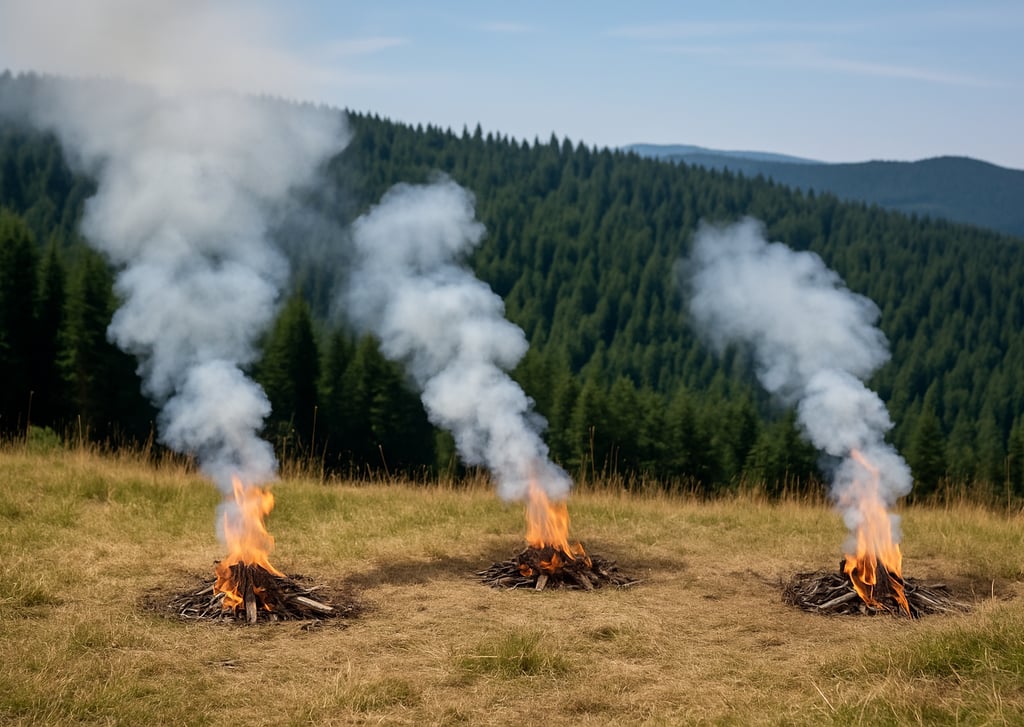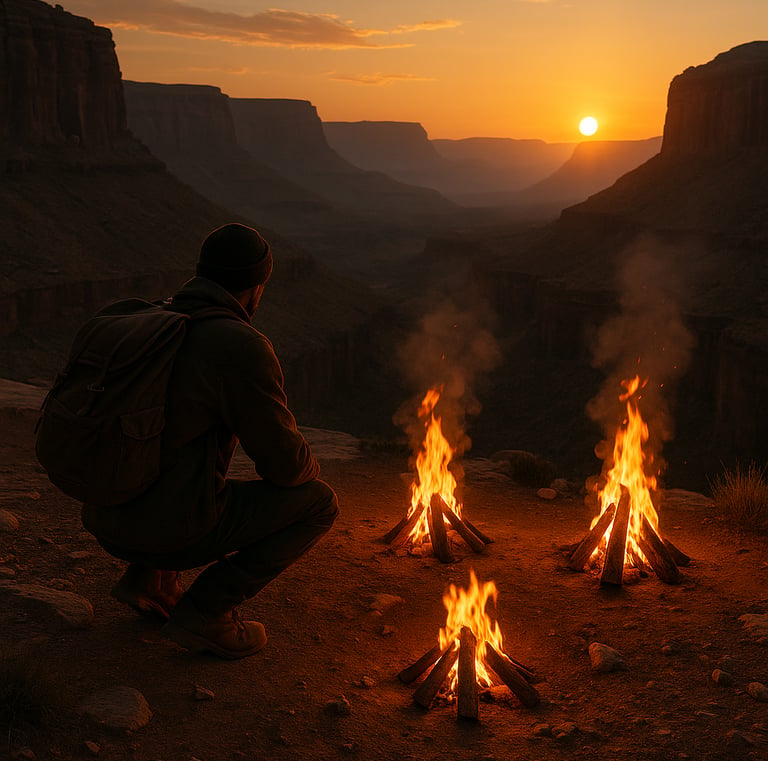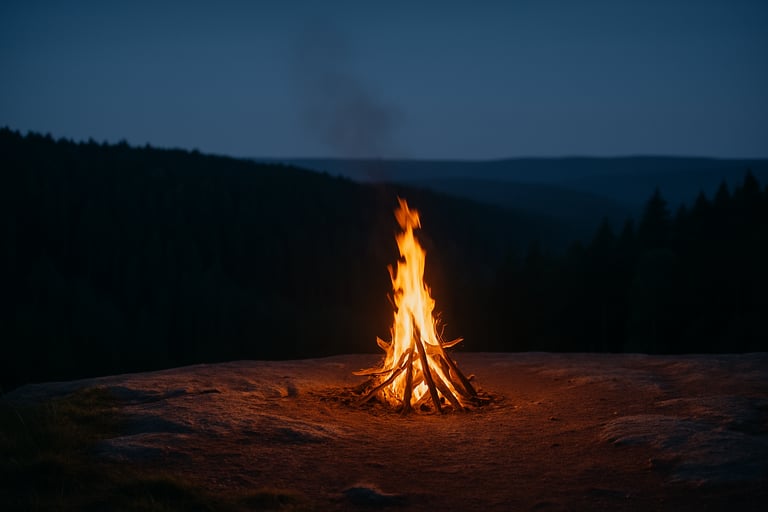Using Fire as a Rescue Signal: Smoke, Flame, and Visibility in the Wild
Learn how to use fire signals to call for rescue in the wilderness. Discover the best fire signal techniques, safety tips, and how to make your fire visible to rescuers using smoke, location, and timing.


Using Fire as a Rescue Signal: Smoke, Flame, and Visibility in the Wild
Why Fire Is an Effective Wilderness Signal
In a survival situation, fire can be more than a source of warmth or cooking, it's one of the most visible and recognizable emergency signals. From rising smoke to flickering flames at night, fire draws attention over long distances. When used correctly, a fire signal can dramatically improve your chances of being spotted and rescued. But it’s not just about lighting a flame, it’s about how, where, and when you use it.
The Pattern of Three: Signal Fires That Rescuers Recognize
Just like with sound or light signals, fire follows the international distress signal pattern of three. This “pattern of three” is explained further in our guide on communication in the wild, where it applies across sound, light, and visual signals alike. That means setting up three fires in a straight line or triangle, spaced evenly apart, ideally on open ground or a ridge.
This pattern is recognized globally as a call for help. If you don’t have the resources for three fires, even a single large, smoky fire will work — especially when paired with movement, such as waving branches or reflective gear nearby. And If you learn how to use reflective materials as rescue signals, it can further boost the impact of your fire signal during both day and night.
Best Materials for Creating a Smoke Signal
If you need to attract attention during daylight, thick smoke is more important than flame. To do this, build your fire using dry wood or brush for heat, and then add green branches, damp leaves, or rubbery materials like moss to generate white or gray smoke. If you're low on supplies, check out our guide on how to start a fire without matches using primitive or improvised methods. A smoky fire rising into the sky is much easier to spot from a plane or distant hilltop.
Nighttime Fire Signals: Flame Over Smoke
At night, your focus shifts from smoke to flame. A fire in darkness can be seen from miles away, especially if you build it on a ridge, hilltop, or clearing. Feed it with dry, fast-burning wood to create a tall flame. As a bonus, you can wave bright objects or flashlights near the fire to increase motion visibility. But always make safety your top concern. Clear flammable brush around the area and never leave a fire unattended.
Choosing the Right Location for Maximum Visibility
When you're setting a fire for signaling, placement matters just as much as fuel. Choose an open area, preferably elevated like a ridge, open meadow, or rocky outcrop. Make sure there are no tree canopies above to block the rising smoke or flame. Rescuers in aircraft or from afar are looking for signals in clear, unobstructed lines of sight.
Fire Safety in an Emergency
While fire is an excellent tool for signaling rescue, it must be used responsibly. Always clear a 10-foot radius around your fire of dry grass, pine needles, and flammable materials. Have water or dirt nearby to douse the flames if they spread. Remember: your goal is to be rescued, not to start a wildfire.
For tips on how to stay safe and signal during poor weather, explore our guide on weathering the storm in survival situations.
Combining Fire with Other Rescue Signals
To boost visibility, you can pair your fire signal with other tools: mirrors, whistles, waving bright clothing, or flashlight signals. Movement catches the eye, so if you hear a helicopter or see distant movement, wave something reflective or bright beside your fire to double your chances of being seen.
Final Thoughts on Using Fire to Signal for Help
Knowing how to use fire as a rescue signal could make all the difference in an emergency. It's a skill that blends survival basics with clear, visible communication. Whether you're lost, stranded, or injured in the wild, understanding how to make your fire seen or your smoke noticed increases your chances of going home safely. Practice these techniques before you need them and always treat fire with care and respect.




© 2025. All rights reserved About | Privacy Policy | Terms and Conditions | Affiliate Disclosure | Disclaimer


